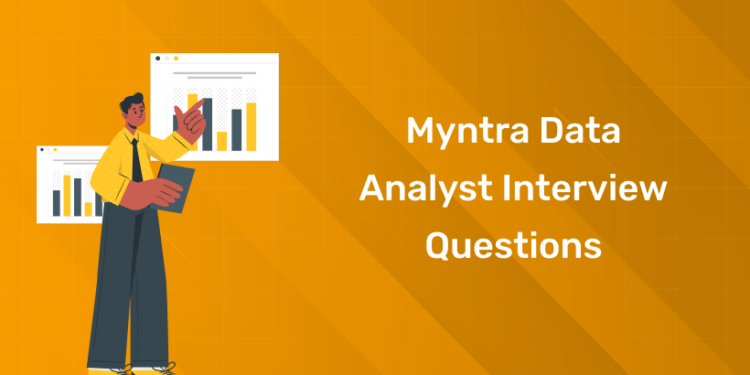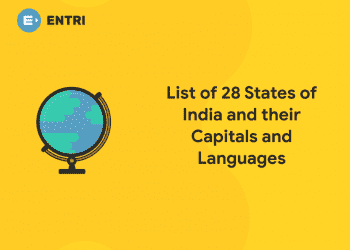Table of Contents
Going to take your Myntra Data Analyst interview soon? And you need to prepare? Great! You have come to the right page! In this article we provide an in-depth look into Myntra’s Data Analyst interview questions, an understanding of the interview process, and essential tips to help you succeed.
Eager to master Python? Enroll in our free demo now!
Introduction
Embarking on a career as a Data Analyst at Myntra, one of India’s leading fashion e-commerce platforms, requires a thorough understanding of both the company’s interview process and the specific skills they value. Here we’ll discuss the well-known e-commerece company Myntra, understand their interview process, provide you with some tips to make your interview more effective and easy, and go through some Myntra Data Analyst interview questions.
Understanding the Interview Process at Myntra
The Myntra Data Analyst interview process generally consists of the following rounds:
- Resume Screening – HR shortlists candidates based on educational background, experience, and technical skills relevant to data analytics.
- Online Assessment (Technical Aptitude) –
- Tests programming logic
- SQL proficiency
- Python skills
- Excel knowledge
- Problem-solving ability
- Technical Interview – Focuses on:
- SQL queries, data manipulation, and joins.
- Python or R for data analysis and visualization.
- Problem-solving and scenario-based business questions.
- Case studies requiring analytical thinking and data-driven decision-making.
- Business Case Discussion – Involves real-world data analytics problems, requiring candidates to derive insights and suggest solutions.
- HR Interview – Includes:
- A discussion about career goals
- Cultural fit
- Behavioral questions using the STAR method
This process typically spans 1-2 weeks, depending on the role and the number of candidates.
Data Analytics Interview Questions for Myntra
Preparing for the interview involves familiarizing yourself with a range of questions that test both fundamental and advanced data analysis skills. Below is a curated list of commonly asked questions, along with detailed answers.
1. Create a Pivot Table and Sort Data in Ascending Order
Question: Given a dataset, how would you create a pivot table and sort the data in ascending order?
Answer:
-
Creating a Pivot Table:
-
Excel:
- Select the dataset.
- Navigate to the ‘Insert’ tab.
- Click on ‘PivotTable’ and choose the desired location for the table.
- In the PivotTable Field List, drag and drop fields into Rows, Columns, and Values areas as needed.
-
Python (Pandas):
-
-
Sorting Data in Ascending Order:
- Excel: Click on the dropdown arrow in the column header and select ‘Sort A to Z’.
- Python (Pandas):
2. Using LOOKUP Functions to Find Specific Data
Question: How would you use lookup functions to find specific data based on a product identifier?
Answer:
-
Excel:
- Utilize the
VLOOKUPfunction:lookup_value: The value to search for.table_array: The range containing the data.col_index_num: The column number in the range that contains the return value.[range_lookup]: Optional;TRUEfor approximate match,FALSEfor exact match.
- Utilize the
-
Python (Pandas):
- Use the
mergefunction to perform a lookup:
- Use the
3. Estimation Question: Number of Women Driving Red Cars in Bangalore
Question: Estimate the number of women who drive red cars in Bangalore.
Answer:
This type of question assesses your ability to make logical assumptions and perform estimations with limited data.
-
Population Estimation:
- Approximate population of Bangalore: ~12 million.
-
Gender Distribution:
- Assuming a 50:50 ratio, the female population is ~6 million.
-
Car Ownership:
- Estimating that 10% of the population owns cars: 1.2 million car owners.
- Assuming equal distribution, female car owners: 600,000.
-
Color Preference:
- If 10% of cars are red: 60,000 red cars owned by women.
-
Driving Factor:
- Assuming 80% of car owners actively drive: 48,000 women driving red cars.
This structured approach demonstrates logical reasoning and quantitative estimation skills.
4. SQL Query: Output Number of Rows Based on Joins
Question: Write an SQL query to find the number of rows returned after performing an INNER JOIN between two tables.
Answer:
Assuming two tables, Orders and Customers, with a common column CustomerID:
This query returns the count of rows resulting from the inner join, representing records with matching CustomerID in both tables.
5. Achieving Gross Merchandise Value (GMV) with Budget Constraints
Question: How would you achieve the target Gross Merchandise Value (GMV) if your budget is over?
Answer:
To achieve GMV targets despite budget constraints:
-
Optimize Marketing Channels: Focus on high ROI channels and reduce spending on less effective ones.
-
Leverage Data Analytics: Use customer data to personalize marketing efforts, increasing conversion rates without additional spend.
-
Promotions and Discounts: Implement targeted promotions to boost sales, ensuring they are cost-effective.
-
Partnerships: Collaborate with brands or influencers for co-marketing opportunities that share costs.
-
Operational Efficiency: Streamline operations to reduce costs, allowing reallocation of funds towards revenue-generating activities.
6. Difference Between GROUP BY and DISTINCT in SQL
Question: Explain the difference between GROUP BY and DISTINCT in SQL.
Answer:
-
DISTINCT:- Purpose: Removes duplicate rows from the result set.
- Usage: Applied directly in the
SELECTstatement. - Example:
-
GROUP BY:- Purpose: Aggregates data based on one or more columns.
- Usage: Often used with aggregate functions like
SUM,COUNT,AVG. - Example:
Key Difference: DISTINCT filters unique rows, while GROUP BY groups rows sharing a value and allows aggregate functions to be applied to each group.
7. Matching Data Across Different Columns in SQL
Question: How do you match data across different columns in SQL?
Answer:
-
You can use the
JOINclause to match data across different tables based on a common column: -
If you’re comparing values within the same table, you can use
SELF JOIN:
This is useful when comparing customer purchases, user interactions, or transactions within a dataset.
Experience the power of our full stack development course with a free demo – enroll now!
Tips & Best Practices for Interview Preparation at Myntra
To maximize your chances of success in a Myntra Data Analyst interview, follow these key strategies:
a. Master Data Analytics Concepts
- Gain expertise in SQL, Python, and Excel for data manipulation.
- Understand statistical concepts such as regression, hypothesis testing, and clustering.
b. Solve Real-World Data Problems
- Work on datasets from Kaggle or open-source repositories.
- Develop dashboards using visualization tools like Tableau and Power BI.
c. Learn Business Metrics Relevant to Myntra
- Understand key e-commerce metrics like GMV, conversion rate, customer retention, and average order value.
- Be prepared for scenario-based questions on how data analytics can enhance Myntra’s operations.
d. Stay Updated with Industry Trends
- Explore AI and machine learning applications in data analytics.
- Follow Myntra’s business growth and analytics-driven initiatives.
e. Mock Interviews & Time Management
- Practice coding problems on platforms like LeetCode and StrataScratch.
- Participate in mock interviews to improve confidence and clarity in explanations.
f. Be Prepared for Hands-On SQL & Python Challenges
- Solve case studies involving SQL queries, data cleaning, and reporting.
- Brush up on feature engineering and data preprocessing techniques.
Conclusion
Securing a Data Analyst role at Myntra requires strong technical skills, analytical thinking, and business acumen. By practicing SQL queries, Python-based data analysis, and real-world case studies, you can confidently tackle interview questions. Additionally, understanding Myntra’s business model and preparing for scenario-based questions will set you apart from other candidates.
Good luck with your Myntra Data Analyst interview!
Eager to master Python? Enroll in our free demo now!
Frequently Asked Questions
What is the interview process for a Data Analyst role at Myntra?
Myntra’s interview process typically includes:
- Online Assessment (SQL, Python, data analysis)
- Technical Interviews (problem-solving, case studies)
- HR Interview (behavioral and culture fit)
What technical skills are required for a Data Analyst at Myntra?
Candidates should have strong skills in:
- SQL (joins, aggregation, window functions)
- Python/R (pandas, NumPy, data visualization)
- Excel (pivot tables, VLOOKUP, data cleaning)
- Statistics & Data Interpretation
What SQL topics should I focus on for the Myntra Data Analyst interview?
Prepare the following SQL concepts:
- Joins (INNER, LEFT, RIGHT, FULL)
- GROUP BY, HAVING, and Aggregate Functions
- Common Table Expressions (CTE) and Subqueries
- Window Functions (ROW_NUMBER, RANK, DENSE_RANK)
What kind of Python questions are asked in the Myntra interview?
Expect questions on:
- Data manipulation using pandas (groupby, merge, apply functions)
- Data visualization (matplotlib, seaborn)
- Basic statistics (mean, median, standard deviation)
- Writing efficient scripts to clean and analyze datasets
Does Myntra ask case study or business problem-solving questions?
Yes, Myntra often asks case studies related to e-commerce analytics. Example: “How would you analyze a drop in sales for a specific category on Myntra?” Candidates are expected to use SQL, Excel, and Python to derive insights.
What kind of Excel questions can be asked in the interview?
You may be asked about:
- Pivot Tables & Charts
- VLOOKUP, HLOOKUP, and INDEX-MATCH
- Data Cleaning using Excel functions
- Conditional Formatting & Advanced Formulas
Are probability and statistics questions asked in the Myntra interview?
Yes, Myntra may test your knowledge of:
- Probability distributions (normal, binomial, Poisson)
- Hypothesis testing & A/B testing
- Correlation vs. Causation
- Descriptive and Inferential Statistics
What kind of behavioral questions are asked in the HR round?
Expect questions like:
- “Tell me about a time you worked with a large dataset.”
- “Describe a challenge you faced while analyzing data and how you resolved it.”
- “Why do you want to work at Myntra?”
How can I prepare for Myntra's Data Analyst interview?
- Practice SQL queries on platforms like LeetCode, StrataScratch, or Mode Analytics.
- Work on real-world datasets using Python (pandas, NumPy, matplotlib).
- Understand Myntra’s business model and key e-commerce KPIs (GMV, retention, churn).
- Solve data case studies related to the fashion e-commerce industry.
What resources can help me prepare for the interview?
- SQL Practice: LeetCode, SQLZoo, Mode Analytics
- Python & Data Analysis: Kaggle datasets, StrataScratch
- Excel Skills: YouTube tutorials, Microsoft Learn
- Case Study Practice: Business case study books, e-commerce data analysis blogs













